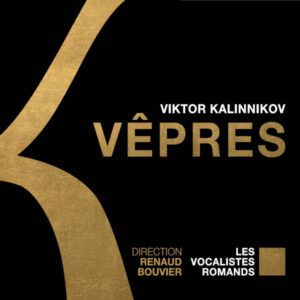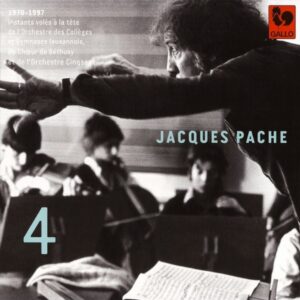Gabriel FAURÉ: Messe Basse: I. Kyrie – Messe Basse: II. Sanctus – Messe Basse: III. Benedictus – Messe Basse: IV. Agnus Dei – Salve Regina, Op. 67, No. 1 – Tantum Ergo, Op. 65, No. 2 – César FRANCK: Panis Angelicus, Op. 12 – Jean LANGLAIS: Missa in simplicitate, Op. 75: I. Kyrie – Missa in simplicitate, Op. 75: II. Gloria – Missa in simplicitate, Op. 75: III. Credo – Missa in simplicitate, Op. 75: IV. Sanctus – Missa in simplicitate, Op. 75: V. Benedictus – Missa in simplicitate, Op. 75: VI. Agnus Dei – Trois Prières, Op. 65: No. 1 Ave Maris Stella – Trois Prières, Op. 65: No. 2 Ave Verum – Trois Prières, Op. 65: No. 3 Tantum Ergo.
Les Petits Chanteurs de Sainte-Thérèse de Genève, Philippe Baud, Conductor.
Benoît Berberat, Organ.
Gounod was also criticized for leaning too much towards human tenderness. But his nature predisposed him to feel this way: religious emotion took this form within him. Should we not accept the nature of the artist?
Thus did Gabriel Fauré plead his own case. In his religious compositions – everyone knows the admirable Requiem – one does not find the grandiloquent sounds that were then in vogue among Wagner’s French followers. Everything leads to an intimate liturgy of the heart. Contemplation, discretion, the freshness of inspiration, and the purity of style testify to the same tender and confident piety, the same fervent gentleness that led us here to the Messe Basse, two motets written fifteen years later: Salve Regina and Tantum ergo. Despite being quite stripped-down and of lesser scale, can we still qualify these compositions as “minor”? We would rather say quite the opposite, “masterpieces”. In an era where sacred art – in France as elsewhere in Europe – had lost all inspiration, where one wandered between the pomposity of post-Romantic extravagance and the distressing blandness of the images of Saint-Sulpice, Fauré showed that he was forging new paths. A connoisseur of ancient music – and yet, like Rameau and almost Mozart, these other keyboard virtuosos, he composed nothing for the organ – he incomparably knew the modes of yore – those of Gregorian traditions – and subtly introduced them into his harmonic writing, which thus plays with an unparalleled and always discreet virtuosity of modulations that often places his music on the borders between modal and tonal.
The Messe Basse recorded here by the Little Singers of Saint Thérèse owes its creation to a holiday circumstance: Gabriel Fauré was vacationing with friends in Villerville, on the Normandy coast, during the summer of 1879, when it was decided that a “musical” mass would be given in the village church for the benefit of the Fishermen’s Society. Fauré and Messager, who was also there, composed a small mass for women’s voices, accompanied by a harmonium and a solo violin. Despite the poverty of means, the work met with great success, as it perfectly accorded, through its simplicity, with the liturgy of a country church. But it remained ignored by the general public for a long time, as it was only in 1906 that Fauré decided to publish the pieces he had composed (hence the absence of Gloria and Credo), not without revising, transforming, and establishing the accompaniment for organ alone. With its transparency, its gentle inflections, this Mass is admirably suited to children’s voices, although it is not always easy for them to perform.
Lien Wikipédia












